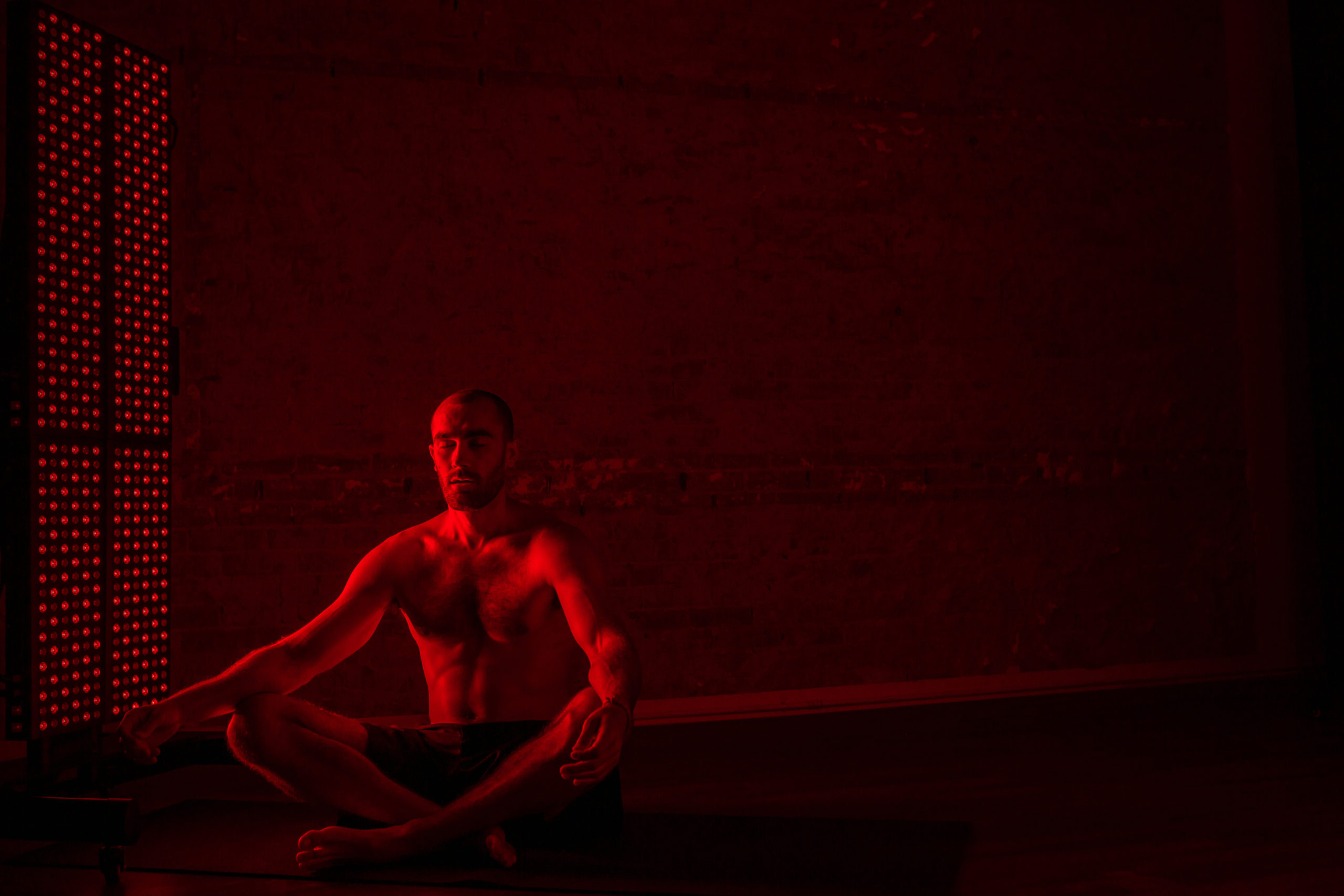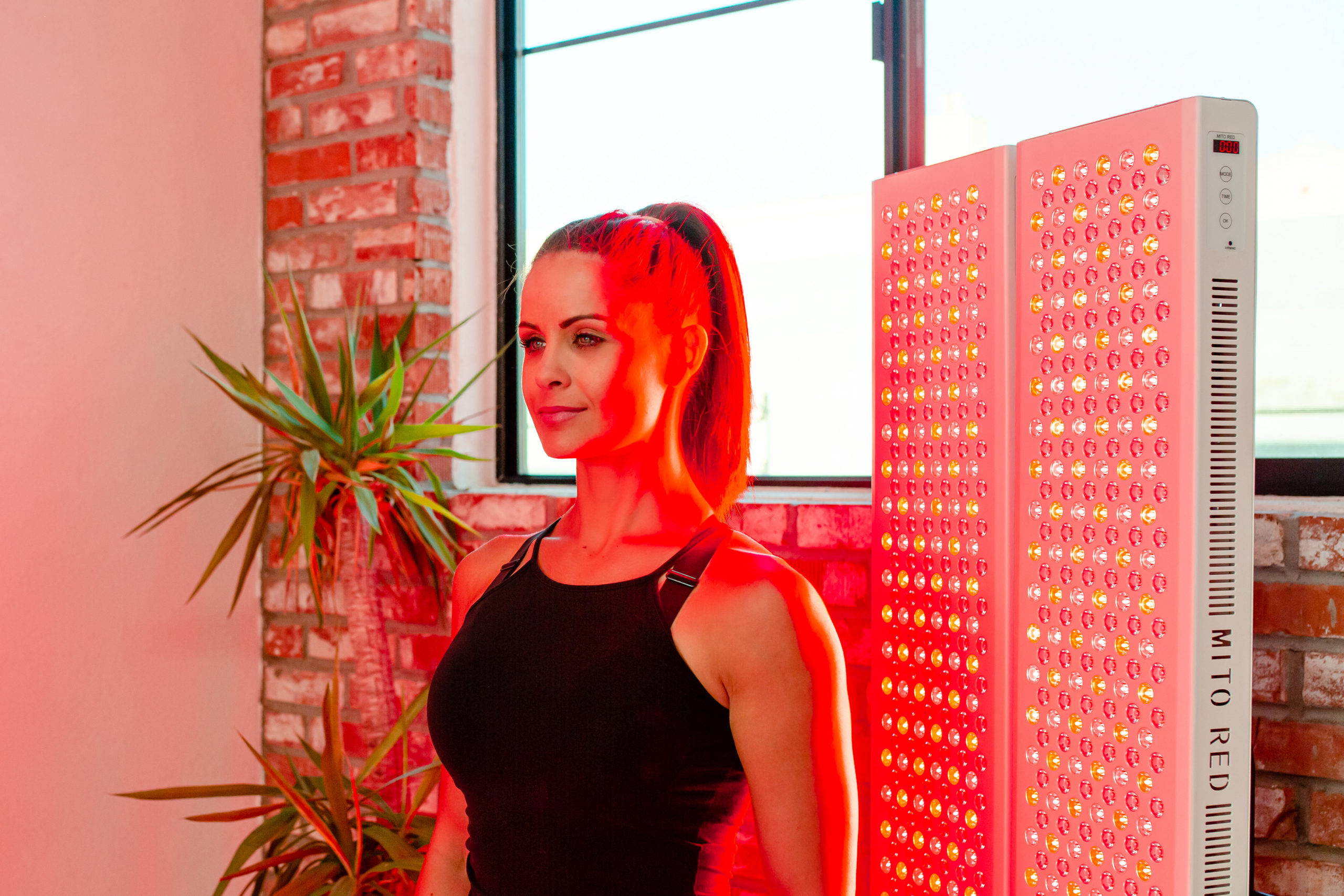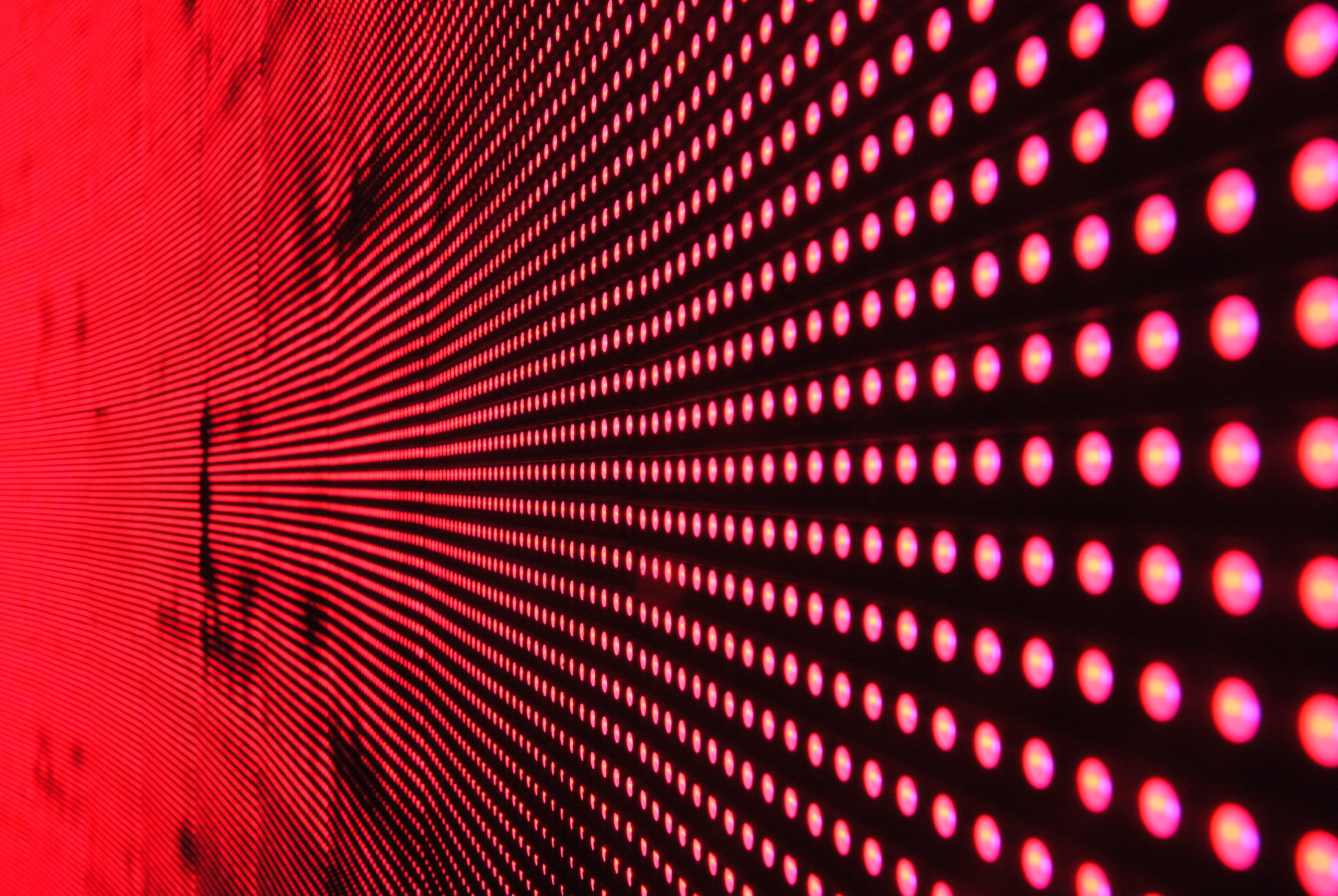I’ve been experimenting with red light therapy now for about 3 weeks. I’m already feeling fantastic short-term benefits, but I’m most excited by what long-term changes might be expected based on some of the research. In a nutshell, it appears red light therapy has the potential to help make old cells act young again. As you might imagine, this has the potential to help us improve many health problems and look and feel better in general.
Needless to say, this is an exciting development. Let’s dive into the possibilities.
Please note: this post may include affiliate links that earn FightLymphedema.com a small commission, at no cost to you, to offset the costs of maintaining this website and content. Thank you for supporting our efforts.
Intriguing research about red light therapy
Our planet and solar system revolve around the Sun. If it diseappared, life on Earth would end. The discovery of electricity and now computers and smart phones has sent most of humanity indoors for large blocks of time. Instead of relying on the Sun, we now change our habitat with the flick of a switch. While we may not give it much thought, research is now suggesting that our health may be suffering from this radical change in lifestyle.
discovery of electricity and now computers and smart phones has sent most of humanity indoors for large blocks of time. Instead of relying on the Sun, we now change our habitat with the flick of a switch. While we may not give it much thought, research is now suggesting that our health may be suffering from this radical change in lifestyle.
Science shows that our bodies respond to light, both physiologically and psychologically. Different wavelengths of light have different impacts. UV light, for example, can cause damage if we get too much. But there are many other wavelengths that researchers are finding have beneficial effects. From the blue light we get in the morning, to evening red light from a sunset or fire, scientists are discovering that different light colors impact our bodies in different ways.
But between indoor lighting, sunscreen and air pollution, it is not surprising to hear that we may collectively suffer from missing out on something our predecessors used to get by simply spending hours outdoors. Top that off with all the artificial light we get staring at various screens for hours, it is not hard to believe that restoring more natural light to our world can provide health benefits.
We’re only as old as our cells…?
As we age, our cells start to behave differently. According to MountSinai.org, older cells get larger and less able to divide and multiply. Waste products build up and they just get slower. Consequently, we lose some of the vitality and resilience we had when we were younger. However, some researchers believe that red light therapy could provide a way to make our old cells act younger again.
What is red light therapy?
Red light therapy is a type of therapy that uses red light to stimulate cells in the body. It has been used historically in doctors’ offices for conditions such as arthritis, chronic pain, and skin problems, often using lasers to deliver the light instead of today’s LED and infrared light panels. But some researchers are now investigating whether these red light sources could also have broader applications that help your body act younger in many ways.
One recent study done at the University of Buffalo suggests that red light therapy can potentially slow down the process of cardiovascular aging by activating cells to act younger. The researchers found that exposing endothelial cells (the cells that line blood vessels) to red light led to an increase in the production of a molecule called nitric oxide, which helps to dilate blood vessels and improve blood flow. This increase in nitric oxide production is a key feature of younger cells. By activating cells to produce more nitric oxide, red light therapy could potentially help to slow down the aging process of blood vessels.
Another randomized control trial in Brazil suggests that red light therapy improves skin health by promoting better cellular activity. The researchers found that exposing skin cells to red light led to an increase in the production of collagen and elastin, which are key proteins that give skin its youthful appearance and elasticity. Additionally, the red light therapy also helped to reduce the production of an enzyme called MMP-1, which breaks down collagen and contributes to the aging process of the skin. By activating cells to produce more collagen and elastin while reducing the breakdown of these proteins, red light therapy helps reduce the appearance of wrinkles and fine lines…so your skin looks and acts younger.
That’s just two examples, but there are many out there. Today, there are over 4,000 studies on red light applications for human health. Even with all this activity, research on red light therapy and anti-aging is still in its early stages. These studies suggest that it could have promising benefits for reversing some aging effects and health challenges. However, of course, we need more information to be sure. But the beauty of red light therapy is it is noninvasive with few risks, so there’s no harm in trying it now.
What’s so special about the color red?
It can seem far-fetched that standing or sitting in front of a red light can make our bodies act younger. This technology was literally an out-of-this-world discovery.
NASA discovered red LED lights’ healing power through experiments in the late 1990s and early 2000s. They were trying to find ways to grow plants in space with colored lights. As the same time, astronauts working with the plants noticed any abrasions on their hands healed quickly.
This spurred more investigation. NASA researchers found that when they exposed cells to red LED lights, they produced more energy and could heal faster. They also discovered that the red light could penetrate deep into the skin, which made it practical for treating various injuries and conditions.
How this therapy activates cells
But how exactly does red light “activate” our cells? Red or near-infrared light penetrates the skin and works by activating a cellular process called photobiomodulation, which triggers a series of chemical reactions in the body that help to enhance cellular function.
When the red light is applied to the skin, it penetrates deep into the tissue. It is absorbed by the mitochondria, which are the powerhouses of the cell. This absorption of light energy leads to an increase in adenosine triphosphate (ATP) production, which is a critical energy source for the body’s cells.
In addition to boosting cellular energy, red light has been shown to increase collagen and elastin production. These are proteins that help keep the skin youthful and healthy. This increase in collagen and elastin production can help to improve fine lines and wrinkles as well as skin tone and texture. It can also speed up wound healing.
Since our entire body is comprised of cells, this discovery is quite exciting.
Scientific studies have demonstrated the benefits of red light therapy for a wide range of health conditions, including musculoskeletal pain, skin disorders, and mental health disorders.
Red light therapy for the lymphatic system
But what about helping those of us with lymphedema, lipidema or other lymphatic system challenges? Great news: several studies suggest that red light therapy can strengthen the lymphatic system as well. Red light has been shown to stimulate lymphatic flow, which can aid in the removal of toxins and improve immune function. Additionally, it has been found to reduce inflammation and promote healing, making it a valuable tool for those struggling with lymphatic issues.
Please see my previous article for more details on the science behind these findings.
What is the recommended frequency and duration of red light therapy sessions?
Because red light therapy is trying to mimic the pure sun exposure of our ancestors, it’s not something you can do once or occasionally. Instead, think of it like exercise…. you’ll only get real benefits by doing it regularly, ideally every day.
So what does that equate to in the real world? The recommended duration of red light therapy sessions varies depending on the device and the condition being treated. Typically, a single session lasts between 5 and 20 minutes.
Another variable is the distance from the light source. Most manufacturers recommend a minimum distance from the panel of 6 inches. You can also step back a foot or two and treat a larger area on a lower dose.
- For skin concerns, shorter durations of 5 to 10 minutes at 12 or more inches away are often recommended.
- For addressing internal systems such as the lymphatic system, manufacturers recommend closer exposure (around 6 to 12 inches from the panels). Then the same 5 to 10 minutes make sense.
You’ll want to treat both the front and back of your body for the best overall benefits. So that means 5 to 10 minutes, then doing the other side, for a total commitment of 10 to 20 minutes a day.
With light, less is more
It’s important to note that longer sessions don’t necessarily result in better outcomes. In some cases, using it more may even be counterproductive. There is some discussion that, at a point, too much exposure negates the benefits. So best to keep your use within the manufacturer’s guidelines.
In terms of frequency, the recommended number of sessions per week also varies depending on the condition being treated. Most panel manufacturers recommend daily use. However, some recommend skipping a day per week. That’s good since there’s often a day you can’t do this type of stuff, so it’s nice to know it shouldn’t impact your results.
Also, be sure to start slow. Some people have experienced detoxification symptoms initially, so it is safest to start slow. I notice my skin feels tight and dry at first if I do to much, so you may want to work up to the full dose. Also, you may want to start with every other day for the first week.
During the initial two weeks, I’ve read that your cells are getting used to this new load of red light and have to get accustomed to it. So starting slow is smart all around.
It’s essential to follow the manufacturer’s instructions for the device being used and to consult with a healthcare professional before starting red light therapy.
What are the risks of red light therapy?
Red light therapy is generally considered safe when used properly. However, some potential risks and side effects are a possiblity. One of the most significant concerns is the potential for eye damage, as exposure to bright light can cause damage to the retina. So be sure to use the goggles or glasses provided with the panels if you use a home device.
Additionally, as mentioned, some people may experience some initial skin irritation. So back off and go slow if you experience this.
Can red light therapy be used with other treatments?
That’s the beauty of this….since it is a non-invasive approach that is healthy as long as used as directed, there is usually no problem with combining it with other treatments. And in fact, several studies have bundled it with different types of health treatments and produced synergistic outcomes.
How quickly can I expect results?
There are short and long-term benefits to be gained from red light therapy. In the short term, you can get inflammation and pain relief, and it can help you sleep better by resetting your circadian rhythms. Long term, you need to give it time to impact you at the cellular level.
As previously noted, the first two weeks of use are when your cells learn about this new input. So while you may get superficial results, the real action is not happening…yet. After about 14 days, they will adjust, learn how to react, and grow more robust to this input that enhances mitochondrial function. So for longer-term health benefits, it may take several months.
What’s the cost of red light therapy?
Because of its non-invasive nature, red light therapy might be worth a try if you’re concerned about a specific aspect of your health or even general health improvement. One option is getting these treatments done in a clinic. That can mean $50 to $150 per treatment plus travel and appointment time.
For most, it can be more convenient to go the home rout. The cost of getting this therapy for personal use at home can vary depending on your chosen device type. You can start with a smaller device for about $300 to $400 and use it at a distance or for part of your body, and it can just take a bit more time to treat the whole body. Or you can purchase a full body panel for usually around $1,100 and treat a bigger area of your body at once (one side at a time).
Some people end up buying multiple panels so they can lower the time required. Researching and choosing a device that fits your budget and meets your needs is essential. And of course, starting with one panel is a conservative way to give it a try without spending too much.
If you have a Health Savings Account or Flexible Spending Account (for U.S. Citizens), you can often use those funds to purchase red light panels. It may require a doctor’s recommendation, so check with your plan.
How to evaluate a red light panel
When evaluating red light therapy devices, raw power is a primary feature. If you don’t get a device with strong enough lights, your treatments may be less effective or require more time. The device that I recommend and am using, after considerable research, is the Mito Pro 1500 panel. (And you can use promotional code FL001 to save 5% on any product in their line.)
This panel is designed to deliver high-quality red light therapy to the body in both red LED form and near-infrared form. Most importantly, the company is very responsive and offers a 60 day return policy (with no restocking fee). If you are considering giving red light therapy a try to address any of these issues, the Mito Pro panel may be a good choice. However, it’s always essential to consult your healthcare professional before starting any new treatment regimen.
Key takeaway
In conclusion, while red light therapy has shown some promising benefits for health and anti-aging, more research will likely reveal more specifics on what we can expect. Nonetheless, it’s an exciting area of study and one that could have significant implications for aging and health. If you’re concerned about maintaining and improving your health with age, then it may make sense to try this out sooner rather than later.
Interested in giving red light therapy a try? Save 5% on any Mito product by using our discount code, FL001.






Leave A Comment